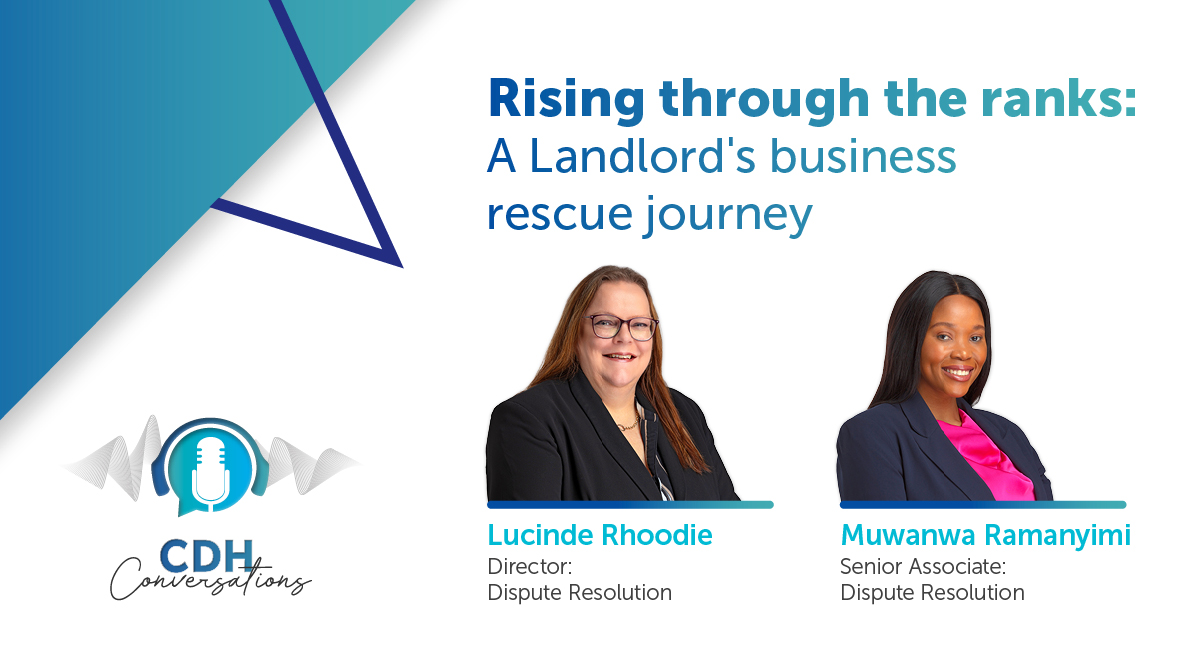The fate of interest free loans?
On promulgation, s7C is expected to come into operation on 1 March 2017, and will be applicable in all years of assessment thereafter.
(There is a minority interpretation that it will only be applicable to loans made after 1 March 2017 - this I think is based more on hope than solid interpretation.)
While the section consists of few words, it holds many implications which go to the core of, and will largely neutralise the well-known and much-used, estate planning tool of interest free loan accounts.
However, these proposals should not come as a shock to tax planners, given the focus the fiscus has placed on the perceived loss of taxes, through the use of trusts - as is evident from the recommendations of the Davis Committee preliminary report. In addition, there have been periodic warnings by the Minister of Finance during his yearly budget speeches that the state wished to curb the perceived loss; a message which was clearly echoed in the most recent budget.
While the general intent of these communications has been clear, some inconsistency appears in the proposed methods to be used and thus the detail in the Amendment Bill is somewhat surprising as it appears contrary to the recommendations of the Davis Committee who adopt a more benign approach to interest free loan accounts.
Current Practice
To gauge the impact of the Amendment Bill’s proposals, it is helpful to reflect on the current application of interest free loan accounts in estate planning. Typically a trust would be capitalised by selling an asset to the trust, while the purchase price remains outstanding. Generally this loan is not subject to any interest, allowing the acquired asset to continue appreciating at no cost in the trust, while the loan value on the other hand remains pegged in the estate of the planner. Effectively the growth thus escapes the estate duty nett, without any other negative tax consequences to the lender. In refinement of this scheme, the loan is often reduced yearly by the maximum amount allowed in respect of exempt donations.
A further and more recent development is the practice whereby distributions made to beneficiaries of income and/or capital gains are in fact not physically paid out to them, but retained in the trust on a credit loan account. Similarly, this loan does not typically attract interest. In this manner the tax benefits are obtained, while avoiding the liquidation of assets to effect the distribution, ensuring that any growth on the loan value remains in the trust.
Aware of the probing enquiries and policy statements by the South African Revenue Services in the recent past, many planners have been prone to ask advisors whether interest free loans “still work”. In the future, if s7C or a similar variation becomes law, the blunt answer will be: no. This will consequently require planners and donors to reconsider their current structures and will be a major consideration for planners who intend to further capitalise a trust or those considering creating a trust anew.
When is s7c applicable?
In essence, the proposed s7C is applicable where:
- A person has made a loan to a trust;
- No interest is incurred by the trust for the loan; and
- The person is a connected person to the trust;
The scope of the above is extended if:
- The loan is made by any company which the founder is connected; and
- Interest is charged but at a rate less than the official rate of interest as contemplated in the Seventh Schedule to the Income Tax Act, No 58 of 1962 (Act).
In explanation:
- A person is connected to the trust if he or any relative is a beneficiary of the trust.
- A company is connected if any person individually or jointly with another connected person holds directly or indirectly at least 20% of the company’s equity share capital or voting rights.
- The official rate is 1% above repro and currently 8%.
What are the implications of s7c?
If the above situation is relevant, the following consequences will flow:
- Interest will be deemed to be charged at the official rate;
- The interest due will be imputed to the lender. In other words, the interest will be added to the lender’s taxable income, for assessment;
- The lender will not be able to deduct such deemed interest from his interest income by availing himself of the interest free exemption set out in s10(1) (i) of the Act;
- If the lender fails to reclaim the additional tax payable from the trust within three years, the said amount will be treated as having been donated by the person to the trust; and
- The lender will not be able to reduce the loan (either the original or the subsequent loan), by utilising the donation exemption set out in s56(2) of the Act, yearly or at all.
Possible responses to the envisaged s7c
Planners, who have been primarily motivated by short-term tax concessions or are unwilling to pay up for the longer and primary benefit of the trust, may be moved to consider unwinding the trust arrangement. However, planners must not lose sight of the transactional costs, and more significantly, the taxes such termination/distribution is likely to trigger in the form of transfer duty, marketable securities tax or, and more likely, capital gains tax.
More fundamentally, such a step cannot be taken at whim and the planner will have to carefully consider the terms of the trust deed, which may restrict such unilateral revocation. Further, in considering such a winding up, trustees will most certainly have to be mindful of existing and future beneficiaries’ vested and contingent rights and the object of the trust at formation.
The possibility of an actual repayment of the loan may be a considered solution and would bring a swift end to the negative consequences of the envisaged provisions. However, this is likely to put much strain on a trust’s liquidity and it is likely to attract capital gains tax and place the loan value back into the estate of the lender, exposing them to creditors and estate duty.
A less dramatic solution may be for the lender to endeavour to renegotiate the terms of the loan to the trust and commence to charge adequate interest. They will not, however, be able to do this unilaterally, and there could conceivably be some resistance given the advantages of retaining the trusts current structure. A common feature of such an interest free loan account is that it is payable on demand and so, armed with imminent enforcement rights, the lender should be able to re-negotiate the terms inherent in such negotiations. Planners and trustees will have to weigh up and balance any potential conflicting positions between the planner and trust beneficiaries.
Apart from avoiding some of the negative consequences of the envisaged provisions in the absence of charging adequate interest, there are some positive by-products of charging adequate interest:
- Firstly, the lender may be entitled to deduct any such interest from his income, in terms of the annual interest exemption and thereby possibly reduce the tax obligation.
- Secondly, in certain limited circumstances, the trust would be able to raise the interest paid as a charge and consequent deduction in the production of income.
In either of the above scenarios, planners will have to do their sums and consider the short and ongoing tax consequences of retaining the interest free arrangement, against the medium to long term benefits of retaining the trust.
On an arithmetic basis, the saving on donations tax and estate duty, will have to be weighed up against the ongoing and enlarged tax obligation by the planner in coming to a decision. Unfortunately the latter is an upfront cost and the former a deferred benefit.
Astute observers have noted that on the current wording of the s7c, loans to a company, even where the entire shareholding is owned by a trust, will not fall within the parameters of the proposals. However, I would not recommend the restructuring of an estate plan based on a perceived current tax loophole.
It cannot go without mention that the record and bookkeeping - that will become necessary and will have to be maintained in implementing the workings of the provision - will place a further burden on planners, trustees and their agents.
Planners who have had an opportunity to consider the new comprehensive tax returns applicable to trusts will realise that these returns will now come into their own. This will force the hand of trustees (and/or their tax representatives), to disclose the relevant details pertaining to both debit and credit loans of trusts with the necessary cross references to lenders and beneficiaries, and facilitate the collection of the relevant taxes.
Conclusion
While s7C is not yet law and no matter what form it may ultimately take, it seems inevitable that the sun has set on the glory days of the interest free loan to trusts.
Without being alarmist, these developments will leave many a planner anxiously awaiting news on the fate of the sacred conduit principle.
The information and material published on this website is provided for general purposes only and does not constitute legal advice. We make every effort to ensure that the content is updated regularly and to offer the most current and accurate information. Please consult one of our lawyers on any specific legal problem or matter. We accept no responsibility for any loss or damage, whether direct or consequential, which may arise from reliance on the information contained in these pages. Please refer to our full terms and conditions. Copyright © 2026 Cliffe Dekker Hofmeyr. All rights reserved. For permission to reproduce an article or publication, please contact us cliffedekkerhofmeyr@cdhlegal.com.
Subscribe
We support our clients’ strategic and operational needs by offering innovative, integrated and high quality thought leadership. To stay up to date on the latest legal developments that may potentially impact your business, subscribe to our alerts, seminar and webinar invitations.
Subscribe




